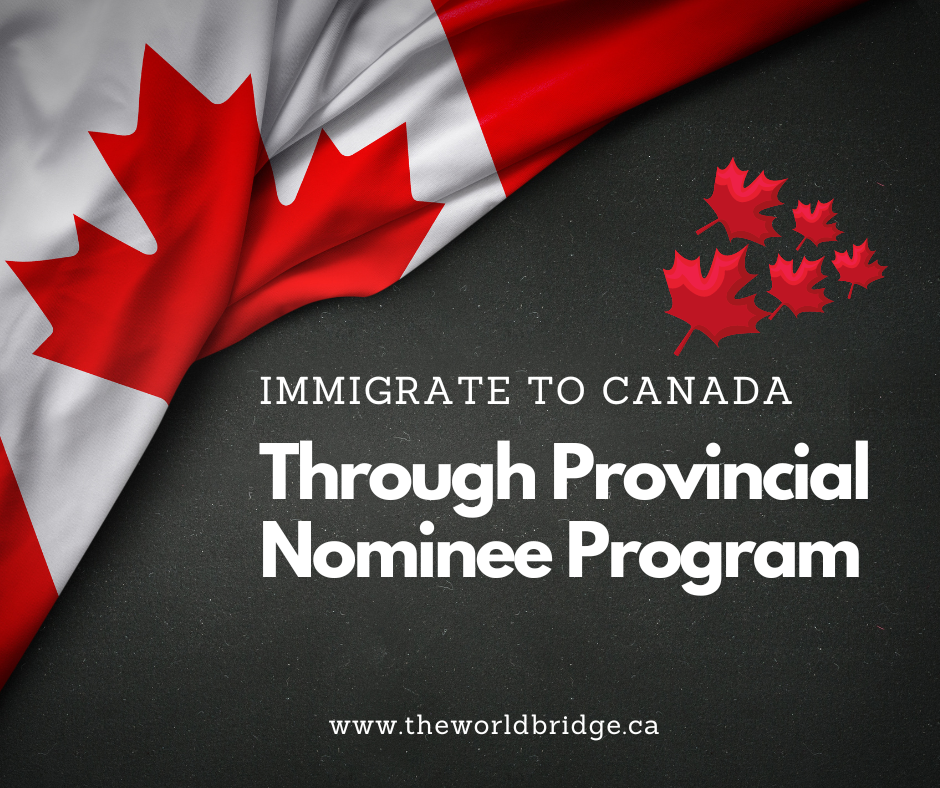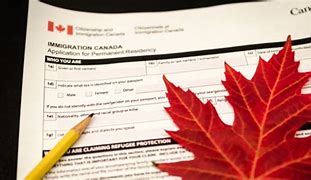Bringing your parents or grandparents to Canada for an extended visit through the Super Visa program is a significant undertaking. Understanding the required documentation is the first crucial step in a successful application. This article outlines the essential documents you, as the inviting child or grandchild, and your parents or grandparents will need to gather. Key Documents for Your Parents or Grandparents: 1-Letter of Invitation: This is a formal letter written and signed by you, the Canadian host, addressed to your parents or grandparents. This letter serves as a personal invitation for them to visit Canada and should clearly state: 2-Proof of Income (Your Financial Capacity): To demonstrate your ability to financially support your parents or grandparents, you must provide official documents proving you meet the minimum income requirements. Acceptable documents include: It is generally recommended to provide more than one type of income proof for a stronger application. 3- National Identity Document: A clear copy of your parents’ or grandparents’ national identity document. Typically, this will be their valid passport. Other government-issued identification may be acceptable, but a passport is the most universally recognized and recommended document. 4-Passport: A clear copy of the biographical page of each applicant’s valid passport. Ensure the passport has sufficient validity beyond their intended stay in Canada. 5-Proof of Funds (Applicant’s Finances – if applicable): While you are primarily responsible for their financial support, providing proof of your parents’ or grandparents’ own funds can strengthen the application. This can include bank statements for the past four months or other relevant financial documents. However, if you are explicitly stating in your invitation letter that you will cover all their expenses, your financial documentation will be the primary focus. 6- IMM 5476 – Use of a Representative (if applicable): If you are assisting your parents or grandparents with their application, you will need to complete and submit the IMM 5476 form. This form officially designates you as their representative for the application process. 7- Proof of Relationship: You must provide documentation that clearly establishes your relationship with the applicants. The most common document for this is your birth certificate, which shows your parents’ names. For grandparents, you may need to include your parents’ birth certificates as well to establish the lineage. 8-Marriage Certificate (of Parents/Grandparents): A copy of your parents’ or grandparents’ marriage certificate is required. If the marriage occurred outside of their country of origin, ensure you obtain an official copy from the relevant government authority. 9-Medical Insurance: A crucial requirement for the Super Visa is proof that your parents or grandparents have purchased medical insurance from a Canadian insurance company that: Streamlining Your Application: Gathering these documents meticulously and ensuring they are clear, complete, and translated (if necessary) will significantly contribute to a smoother application process. By understanding the requirements for both you and your visiting family members, you can proactively prepare and increase the likelihood of a positive outcome. Remember to review the official website of Immigration, Refugees and Citizenship Canada (IRCC) for the most up-to-date information and any additional requirements. Let Worldbridge Immigration Services be your guide to a successful future in Canada Contact us: Website: www.theworldbridge.ca Email: info@theworldbridge.ca Phone/WhatsApp: +1-416-727-7766 Social Media: @worldbridgeHQ
Provincial Nominee Programs (PNPs) for Applicants with Low CRS Scores in 2025
For many individuals aspiring to immigrate to Canada, a low Comprehensive Ranking System (CRS) score can seem like an insurmountable obstacle. However, Provincial Nominee Programs (PNPs) continue to offer viable pathways to permanent residency, even for candidates with modest CRS scores. In 2025, several provinces are actively seeking skilled workers through their respective PNPs, providing opportunities that may not be available through the federal Express Entry system alone. The Growing Importance of PNPs in Canadian Immigration With PNPs accounting for approximately 50% of Canada’s immigration targets, these programs play a pivotal role in addressing regional labor market needs. A provincial nomination adds 600 points to a candidate’s CRS score, virtually guaranteeing an Invitation to Apply (ITA) for permanent residency. Provinces select candidates based on various criteria, including: Top 5 PNPs for Low CRS Scores in 2025 1. Saskatchewan Immigrant Nominee Program (SINP) – Occupation In-Demand Stream Saskatchewan remains a top choice for candidates without a job offer. The SINP frequently selects applicants with scores as low as 60-70 points on its own assessment grid, provided their occupation aligns with the province’s in-demand list. Key Advantages: 2. Alberta Advantage Immigration Program (AAIP) – Express Entry Stream Alberta has a history of inviting Express Entry candidates with CRS scores as low as 300, particularly those with: Key Advantages: 3. Ontario Immigrant Nominee Program (OINP) – Human Capital Priority Stream While Ontario typically targets high-scoring Express Entry candidates, it occasionally conducts draws for: Key Advantages: 4. Nova Scotia Nominee Program (NSNP) – Labour Market Priorities Stream Nova Scotia’s PNP is known for its targeted draws, often inviting candidates with lower CRS scores in sectors such as: Key Advantages: 5. New Brunswick Skilled Worker Stream (Express Entry Linked) New Brunswick’s Express Entry-linked stream prioritizes candidates who: Key Advantages: Strategies to Improve Your Chances 1. Maintain an Active Express Entry Profile – Ensure your profile is up to date with the latest work experience, language test results, and educational credentials. 2. Research Provincial Labour Needs – Focus on provinces where your occupation is in high demand. 3. Consider French-Language Proficiency – Bilingual candidates may have additional opportunities in Ontario, New Brunswick, and other provinces. 4. Monitor Provincial Immigration Websites – Some PNPs announce draws or program updates before they appear on federal platforms. 5. Explore Job Offer Options – While not always required, a valid job offer can significantly strengthen your application. Final Considerations A low CRS score does not preclude you from achieving your Canadian immigration goals. By strategically targeting PNPs aligned with your skills and experience, you can still secure permanent residency in 2025. For the latest updates on Canadian immigration programs, subscribe to our newsletter and stay informed about new opportunities. Let Worldbridge Immigration Services be your guide to a successful future in Canada Contact us: Website: www.theworldbridge.ca Email: info@theworldbridge.ca Phone/WhatsApp: +1-416-727-7766 Social Media: @worldbridgeHQ
Best Canada PR Pathways for 2025
Canada offers multiple PR pathways, but choosing the right one is key. Here are the fastest and easiest options for 2025: 1. Express Entry (Fastest Option) 2. Provincial Nominee Program (PNP) – Easier for Lower CRS 3. Study in Canada (Long-Term Strategy) 4. Family Sponsorship (If Eligible) 5. Other Options (Less Competitive) Next Steps? Need help choosing the best path? Book a consultation with our experts! 🚀 Let Worldbridge Immigration Services be your guide to a successful future in Canada Contact us: Website: www.theworldbridge.ca Email: info@theworldbridge.ca Phone/WhatsApp: +1-416-727-7766 Social Media: @worldbridgeHQ
Canada’s Latest Express Entry Draw Targets PNP Candidates with 727 CRS Cutoff
April 28, 2025 – In a move that has intensified competition among immigration hopefuls, Canada’s Express Entry system has issued 421 invitations for Permanent Residency (PR) in its second draw of April 2025. This round exclusively targeted candidates with Provincial Nominee Program (PNP) endorsements, leaving many skilled workers without provincial nominations at a significant disadvantage. Key Details of the April 28 Express Entry Draw The latest draw saw a Comprehensive Ranking System (CRS) cutoff score of 727, one of the highest in recent months. Only candidates with a provincial nomination—which automatically adds 600 points to their CRS score—were considered. This effectively sidelined applicants relying solely on Federal Skilled Worker Program (FSWP), Canadian Experience Class (CEC), or Federal Skilled Trades Program (FSTP) pathways. Why the Focus on PNP Candidates? Canada’s demographic challenges are driving this strategic shift. With over 20% of the population now aged 65 or older, the government is prioritizing immigration to bolster regional economies outside major urban centers like Toronto and Vancouver. Provincial Nominee Programs allow provinces to select candidates who meet specific labor market needs, ensuring that skilled workers are distributed across the country rather than concentrated in a few metropolitan areas. Current CRS Score Distribution: A Competitive Landscape As of April 28, 2025, the Express Entry pool contains 246,673 candidates, with a significant number clustered in the 451-500 CRS range. For these applicants, securing an Invitation to Apply (ITA) without a provincial nomination has become increasingly difficult. The latest draw underscores the growing importance of PNP-aligned strategies for those seeking Canadian PR. What’s Next for Express Entry in 2025? Canada’s immigration strategy appears to be leaning heavily toward PNP-driven growth, meaning candidates without a nomination must explore alternative avenues to remain competitive. Key steps include: Conclusion: Adapting to Canada’s Evolving Immigration Landscape The Express Entry system is undergoing a clear transformation, with PNPs playing a pivotal role in selection. For prospective immigrants, securing a provincial nomination could be the deciding factor in achieving their Canadian dream. As competition intensifies, staying informed, flexible, and proactive will be crucial for success. For more updates on Canada’s immigration trends and strategies, stay tuned to our latest analyses. Let Worldbridge Immigration Services be your guide to a successful future in Canada Contact us: Website: www.theworldbridge.ca Email: info@theworldbridge.ca Phone/WhatsApp: +1-416-727-7766 Social Media: @worldbridgeHQ
Navigating the Evolving Landscape of Canada’s ICT Startup Program
For international enterprises setting their sights on Canadian expansion, the Intra-Company Transfer (ICT) Startup Program has long served as a crucial pathway for establishing a presence and deploying key personnel. This program facilitates the entry of employees from foreign branches of multinational corporations to initiate operations within Canada. However, recent policy adjustments, effective October 2024, have introduced significant modifications that necessitate a thorough understanding for businesses seeking to leverage this route. Previously, the ICT Startup Program offered a relatively streamlined approach for international companies, even those with a singular overseas operation, to establish a Canadian foothold. Under the former regulations, a company with, for instance, only a United States-based office could incorporate a Canadian entity and subsequently transfer employees from their existing U.S. office to the newly formed Canadian branch. This process, aptly named the ICT Startup, required the initial establishment of a Canadian operation to receive employees arriving under the ICT framework. This was the established procedure prior to the recent regulatory updates implemented by Canadian immigration authorities in October 2024. Key Policy Revisions to the ICT Startup Program The updated regulations maintain the availability of the ICT Startup pathway for international companies but introduce critical new prerequisites: This signifies a fundamental shift. Both the parent company and the affiliate in the secondary country must be actively generating revenue. Only upon satisfying these dual operational requirements can the company proceed with establishing an entity in a third country, such as Canada, and subsequently transfer employees to the Canadian location under the ICT Startup Program. Significant Implications of the Changes A core alteration to the ICT Startup Program lies in the expanded operational footprint now mandated. Previously, the program necessitated the existence of only two entities: one located outside Canada and the nascent operation within Canada. The revised regulations now demand evidence of a successful and revenue-generating business presence in an additional, third country (the second country outside of Canada) as a prerequisite for initiating an ICT Startup in Canada. This represents a substantial adjustment that will significantly impact the eligibility criteria for numerous international companies. The ICT Startup for Established Multinational Corporations Despite these changes, the ICT Startup Program remains a vital instrument for established multinational corporations, particularly those securing contracts within Canada. For instance, a multinational firm awarded a Canadian contract but lacking local personnel can utilize this program to transfer highly skilled employees or senior executives from their international offices to Canada to fulfill their obligations. Mandatory Physical Office Location Another critical modification pertains to the operational base of transferred employees within Canada. Under the updated guidelines, companies utilizing the ICT Startup Program must ensure that transferring employees are assigned to a designated commercial office location within Canada. Previously, the ICT framework permitted the establishment of a virtual office, allowing employees to work remotely upon their arrival in Canada. This is no longer permissible under the ICT Startup or other ICT program streams. A tangible, established office space where the employee will be based is now a mandatory requirement. Essential Ongoing Requirements Beyond these recent amendments, several fundamental requirements persist. The applicant company must convincingly demonstrate to immigration authorities the viability and potential benefits of their Canadian venture to Canada. A comprehensive business plan outlining the positive impacts of the new Canadian operation on the Canadian economy, society, and labor market is a crucial submission. This plan must articulate how the specialized knowledge and expertise of the transferred employees will be disseminated and contribute to the skills development of the Canadian workforce. Furthermore, the company must provide verifiable evidence of sufficient financial resources to adequately cover its operational expenses within Canada. Conclusion: Adapting to the New Realities The recent modifications to Canada’s ICT Startup Program introduce a heightened level of complexity for international companies contemplating Canadian expansion. Multinational corporations must now navigate more stringent eligibility criteria, including the prerequisite of revenue-generating operations in at least two countries, before establishing a Canadian entity and transferring personnel. This policy shift will undoubtedly reshape the strategies employed by businesses seeking to enter the Canadian market. Nevertheless, for those companies that satisfy these revised requirements, the ICT Startup Program continues to present a valuable opportunity to establish operations and bring essential, high-skilled talent to Canada. It remains a fundamental mechanism for multinational corporations aiming to fulfill contracts, expand their global footprint, and contribute to the Canadian economic landscape. Understanding these evolving regulations is paramount for any international business considering this pathway to Canadian expansion. Let Worldbridge Immigration Services be your guide to a successful future in Canada Contact us: Website: www.theworldbridge.ca Email: info@theworldbridge.ca Phone/WhatsApp: +1-416-727-7766 Social Media: @worldbridgeHQ
Navigating Employer Eligibility for the Rural and Northern Immigration Pilot (RNIP)
For individuals seeking Canadian Permanent Residency through the Rural and Northern Immigration Pilot (RNIP), understanding the criteria for eligible employers is paramount. It’s not simply a matter of having a job offer; the employer themselves must meet specific requirements to support your application. Firstly, any employer who wishes to endorse a candidate under the RNIP must be officially designated by the specific participating community where their business is located. This designation signifies that the employer has been recognized by the community as meeting their local economic development needs and immigration program criteria. Secondly, not every employer within a participating community is eligible for designation. Communities prioritize businesses operating within sectors identified as crucial for their economic growth and labor market demands. These are known as priority sectors. The rationale behind this requirement is to ensure that the RNIP attracts and retains newcomers who will contribute to the long-term prosperity of the region. Therefore, if you are exploring job opportunities in RNIP communities such as Timmins, Thunder Bay, or others, your first step should be to consult the official website of that specific community. These websites clearly outline the designated priority sectors for their RNIP program. It is imperative to verify whether your prospective employer’s business activities align with one of these identified sectors. If the employer operates within a priority sector, they are then eligible to apply for designation by that particular community. The community’s official website will also provide comprehensive instructions detailing the employer designation process. This typically involves an application where the employer demonstrates their business legitimacy, their role within a priority sector, and their commitment to providing stable employment. Understanding these steps is crucial for both the employer and the potential employee. Navigating the RNIP requirements can sometimes be complex. If you encounter any confusion regarding employer eligibility or the designation process, or if you require further assistance and guidance, seeking support from qualified immigration consultants or resources is highly recommended. They can provide tailored advice and ensure a smoother application process. Let Worldbridge Immigration Services be your guide to a successful future in Canada Contact us: Website: www.theworldbridge.ca Email: info@theworldbridge.ca Phone/WhatsApp: +1-416-727-7766 Social Media: @worldbridgeHQ
Navigating Canadian Permanent Residency in 2025: Pathways Without a Job Offer or LMIA
The Canadian immigration landscape is undergoing significant shifts, making the pursuit of Permanent Residency (PR) in 2025 more demanding than ever. With reduced immigration targets, elevated Comprehensive Ranking System (CRS) cut-offs, and evolving policy priorities, the prospect of securing PR without a job offer or Labour Market Impact Assessment (LMIA) may seem daunting. However, it is indeed still achievable with a strategic and well-prepared approach. This article outlines key strategies to strengthen your PR application without direct employer support, emphasizing the critical adjustments in Canada’s immigration system for 2025. The Evolving Canadian PR Landscape: Why Strategy is Paramount Canada has lowered its annual immigration targets, intensifying competition within key pathways like Express Entry and Provincial Nominee Programs (PNPs). Relying on outdated methods or a passive approach is no longer effective. The Canadian government is now prioritizing candidates who demonstrably align with the nation’s long-term labor market needs. This means generic applications based solely on point accumulation will likely fall short. A focused strategy, underpinned by relevant skills and experience, is now essential. Express Entry: A More Competitive Arena While Express Entry remains a primary route to PR, it’s no longer a straightforward points-based system. Significant updates to the CRS in 2025 have reshaped the landscape: Despite these advantages for some, consistently high CRS cut-offs necessitate a proactive approach to enhance every aspect of your profile. Provincial Nominee Programs (PNPs): A Vital Alternative Given the heightened competition within Express Entry, PNPs present a crucial alternative pathway. Provinces utilize these programs to nominate candidates who meet specific local labor market demands. Prominent PNP streams in 2025 include: It’s important to note that many PNP streams now prioritize candidates with employer support. Therefore, actively seeking employment within target provinces and networking with employers in your field are vital steps. Diligently monitoring provincial draw trends can also reveal opportunities. Maximizing Your CRS Score: Every Point Counts A common pitfall for applicants is underestimating the significance of language proficiency. Achieving a Canadian Language Benchmark (CLB) level of 9 across all four language abilities (reading, writing, listening, and speaking) can unlock substantial CRS points (over 100). To elevate your language scores: The Strategic Advantage of Foreign Work Experience A frequently overlooked strategy is leveraging skilled foreign work experience. Documented work experience outside of Canada, particularly if it aligns with a TEER Category 0, 1, 2, or 3 NOC code and any Canadian work experience you may have, can significantly boost your CRS score. Even one year of such experience can add up to 50 valuable points. Ensure your experience is verifiable through reference letters, contracts, and pay slips. The Power of French Language Proficiency In 2025, French language proficiency has evolved from a mere asset to a significant competitive advantage. Candidates demonstrating a CLB level of 7 in French may qualify for French-specific Express Entry draws and can earn up to 50 additional CRS points. Even foundational French language skills acquired through 6-8 months of dedicated study can open new immigration pathways, particularly outside of Quebec where the demand for bilingual professionals is increasing. Debunking the Myth of Simple Relocation It’s a misconception that simply moving to a different Canadian province will automatically improve your PR prospects. Relocation alone will not enhance your chances unless you meet the specific labor market needs and eligibility criteria of that particular province. Strategic Advice for International Students in Canada For international students in Canada, the Post-Graduation Work Permit (PGWP) offers a limited window of opportunity. It is crucial to utilize this time strategically by: The Enduring Importance of Employer Support While this article focuses on pathways without a direct job offer or LMIA, it’s important to acknowledge that employer-backed PR pathways remain vital in 2025. Programs like the Rural and Northern Immigration Pilot and the Francophone Community Pilot specifically require job offers from designated employers in participating communities. Focusing on smaller communities like Thunder Bay, Sudbury, or Timmins, where employers actively seek dedicated talent, can be a fruitful strategy. Resources such as local job boards, Chamber of Commerce websites, and provincial nominee portals can be valuable in this pursuit. The Hidden Booster: Strategic Foreign Experience Revisited If your CRS score remains stagnant, consider strategically acquiring 6-12 months of skilled foreign work experience in a high-demand occupation, such as healthcare, logistics, skilled trades, or information technology. This experience, whether gained remotely or locally, when combined with relevant online training and strong English and French language scores, can significantly transform your profile. Crafting Your 2025 PR Game Plan: A Holistic Approach Achieving PR success in 2025 requires a comprehensive and multifaceted strategy. It’s not about excelling in one area but rather optimizing every aspect of your application: Final Thoughts: Act Now to Secure Your Future Obtaining Canadian Permanent Residency in 2025 without a job offer or LMIA is indeed possible. However, it demands proactive effort, continuous improvement, and unwavering dedication. Success will favor those who diligently build their profile, enhance their skills, and persistently pursue all available opportunities. Start today by improving your language proficiency, reassessing your work history, connecting with employers, and exploring the benefits of French language acquisition. By strategically building your profile piece by piece, you can unlock the doors to your Canadian future. Let Worldbridge Immigration Services be your guide to a successful future in Canada Contact us: Website: www.theworldbridge.ca Email: info@theworldbridge.ca Phone/WhatsApp: +1-416-727-7766 Social Media: @worldbridgeHQ
Facilitating Foreign Worker Entry: Understanding the Canadian Offer of Employment
For Canadian employers seeking to bring foreign talent into their workforce, the offer of employment serves as a crucial initial step in engaging with the Canadian government. This process allows the government to assess whether a foreign national should fill a particular position within Canada. The Role of the Offer of Employment In many instances where a Canadian employer wishes to hire a foreign worker, they must first navigate the Labour Market Impact Assessment (LMIA) process. However, certain categories of employment are LMIA-exempt. In these situations, the employer typically initiates the hiring process by submitting an offer of employment directly to the government. Submitting the Offer: A Step-by-Step Overview The offer of employment is submitted electronically through the employer’s designated portal on the government’s website. This online submission requires comprehensive information about the specific foreign national being considered for hire. Key details include: Upon successful submission of the offer of employment and payment of the $230 processing fee, the government system automatically generates a unique A number. This number is a critical identifier for the offer. Connecting the Offer to the Work Permit The offer of employment and the subsequent work permit application are distinct but interconnected processes. Once the employer receives the A number, they must provide it to the foreign national. The foreign national will then include this A number in their separate work permit application. When the immigration officer reviews the work permit application submitted by the foreign national, they will meticulously examine the details provided by the employer in the offer of employment. The officer will also evaluate whether the foreign national’s qualifications, skills, and experience align with the employer’s stated needs. Based on this comprehensive assessment, the Canadian immigration officer will make a decision on the work permit application. Conclusion: A Foundational Element The offer of employment stands as a fundamental component in the process of hiring foreign nationals in Canada, particularly within LMIA-exempt categories. It serves to formally present essential job and candidate details to the Canadian government for review, paving the way for the subsequent work permit application. Let Worldbridge Immigration Services be your guide to a successful future in Canada Contact us: Website: www.theworldbridge.ca Email: info@theworldbridge.ca Phone/WhatsApp: +1-416-727-7766 Social Media: @worldbridgeHQ
Navigating Application Refusals: Understanding the Reconsideration Pathway
When an immigration application faces refusal, whether for a work permit, study permit, or permanent residency, it can be a frustrating experience. However, if you believe an error was made in the assessment, a reconsideration request offers a direct avenue to address the decision with the immigration authorities. Essentially, a reconsideration request involves formally communicating to Immigration, Refugees, and Citizenship Canada (IRCC) why you believe the initial refusal was incorrect. This argument often centers on overlooked information or a perceived misapplication of regulations by the assessing officer. If you are confident that the decision would have been different had a specific piece of evidence been considered or an error rectified, pursuing reconsideration can be a worthwhile step. When Might Reconsideration Be the Right Approach? Consider a reconsideration request when you suspect a mistake in the evaluation of your application. This could arise in various scenarios, such as: In such instances, a reconsideration request provides an opportunity to present your case again with a focus on the perceived error. Crafting a Persuasive Reconsideration Request To maximize the effectiveness of your request, understanding the reasons behind the refusal is paramount. The refusal letter often provides a general explanation. To gain deeper insight, obtaining the officer’s notes is highly recommended. These notes detail the specific reasoning behind the decision and can be requested from IRCC. Once you have these notes, you can carefully analyze the rationale for the refusal. This analysis will help you determine if a genuine error occurred and if a reconsideration request is the most appropriate course of action. Your reconsideration request should then clearly and concisely articulate the identified error and provide any supporting documentation or arguments to demonstrate why the original decision should be reviewed. Advantages of Pursuing Reconsideration One significant advantage of a reconsideration request lies in its relative simplicity compared to a formal appeal. An appeal typically involves a judicial review process, which can be lengthy, complex, and costly, often requiring legal representation and court proceedings. In contrast, a reconsideration request is a direct communication with IRCC, focusing on presenting factual arguments and highlighting potential oversights. This makes it a potentially faster and less expensive way to address a refused application. Important Considerations While reconsideration offers a more streamlined approach than an appeal, it’s crucial to understand that its success is not guaranteed. IRCC may review your request and ultimately uphold their original decision. In such cases, the refusal stands. In conclusion, a reconsideration request provides a valuable opportunity to challenge a potentially incorrect refusal decision. By carefully analyzing the reasons for refusal and presenting a well-articulated argument supported by evidence, you can request IRCC to take another look at your application. While not a guaranteed solution, it offers a direct and often more efficient pathway to address perceived errors before considering more complex avenues like appeals. Let Worldbridge Immigration Services be your guide to a successful future in Canada Contact us: Website: www.theworldbridge.ca Email: info@theworldbridge.ca Phone/WhatsApp: +1-416-727-7766 Social Media: @worldbridgeHQ
How to Effectively Respond to a Procedural Fairness Letter in Canadian Immigration
Receiving a Procedural Fairness Letter (PFL) from Canadian immigration authorities can be alarming, but it’s not the end of the road. This critical document gives you an opportunity to address concerns before a final decision is made. Understanding how to respond effectively can mean the difference between approval and refusal. What Is a Procedural Fairness Letter? A PFL is a formal notice from Immigration, Refugees and Citizenship Canada (IRCC) or the Canada Border Services Agency (CBSA) indicating that they have concerns about your application. Before refusing or rejecting it, they must give you a fair chance to respond—this is a fundamental principle of procedural fairness in Canadian law. Why Did You Receive a PFL? Common reasons for a PFL include: 1. Concerns About Relationship Genuineness (Spousal/Common-Law Sponsorships) – If IRCC suspects a marriage or partnership is not authentic (e.g., short relationship history, lack of cohabitation evidence). – How to Respond: Provide additional proof such as: 2. Suspected Misrepresentation (False or Incomplete Information) – If IRCC believes you provided incorrect or misleading details (even unintentionally). – How to Respond: 3. Medical Inadmissibility Concerns – If a medical exam suggests your condition could place excessive demand on Canada’s healthcare system. – How to Respond: 4. Criminal or Security Issues – Past criminal records or security risks may trigger a PFL. – How to Respond: Steps to Crafting a Strong Response 1. Read the PFL Carefully 2. Gather Strong Supporting Evidence 3. Write a Clear, Organized Reply 4. Consult an Immigration Lawyer (If Possible) What Happens If You Don’t Respond? Final Thoughts A Procedural Fairness Letter is a second chance, not a rejection. By responding thoroughly, accurately, and on time, you can resolve concerns and keep your immigration journey on track Let Worldbridge Immigration Services be your guide to a successful future in Canada Contact us: Website: www.theworldbridge.ca Email: info@theworldbridge.ca Phone/WhatsApp: +1-416-727-7766 Social Media: @worldbridgeHQ










